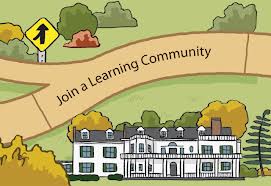Nonprofit board members: What to do when they just don’t get it
 Every now and then there’s a board of directors that — how can this be written diplomatically — doesn’t seem to get it. This doesn’t happen often, but when it does it’s never a pretty sight. Usually the not-getting-it board seems to be paying attention, and its members really do want the best for their organization, but somehow or another “the best” never seems to happen. In fact, to most outsiders, the organization might seem immobilized and floundering. There are many reasons why nonprofits seem headed for doom, dysfunction, or both, and most of the time it isn’t directly attributable to board members skype for pc for free. But when it is a board problem, here are some frequent scenarios and potential fixes.
Every now and then there’s a board of directors that — how can this be written diplomatically — doesn’t seem to get it. This doesn’t happen often, but when it does it’s never a pretty sight. Usually the not-getting-it board seems to be paying attention, and its members really do want the best for their organization, but somehow or another “the best” never seems to happen. In fact, to most outsiders, the organization might seem immobilized and floundering. There are many reasons why nonprofits seem headed for doom, dysfunction, or both, and most of the time it isn’t directly attributable to board members skype for pc for free. But when it is a board problem, here are some frequent scenarios and potential fixes.
The past and the short term future
This common problem was covered in “What Time Are You?” in the May 2013 issue of The NonProfit Times. Ideally, a board of directors is focused mostly on the future, less so on the details of the present. This is because boards of directors should be leaders, not outsiders immersed in management detail. Perhaps not surprisingly, board members’ preferred orientation to time is often connected with their personalities and what they do for work. Board members who work in technical roles of any kind often prefer to operate in the here and now teamviewer 12 chip. This means they could be uncomfortable with the kind of thinking that leaders must do to position a nonprofit for the next three or four years.
The solution to this kind of board dysfunction is straightforward yet admittedly difficult. The simplest approach is to construct each board agenda so that the bulk of time will be spent on future opportunities and challenges instead of focusing on subjects from the past or votes requiring immediate attention. Constructing the agenda so that the majority of items relate to future decisions is actually simpler than it seems. It does require that the CEO and board chair work closely together, but that is largely a matter of sharing the same future orientation to time treiber der netzwerkkarte herunterladen. Part of leadership is shared discipline among the leadership team, and this is a relatively easy place to start.
The term “trustee” is sometimes used to refer to a conventional nonprofit board member, but that is usually either a loose statement of philosophy or an inaccuracy. In legal terms, a trustee holds property on behalf of an outside beneficiary. That is in no way similar to nonprofit board member responsibilities, which are more related to leadership than conversation of assets, but the mythology persists.
Implicit in a trustee self-image is the idea that the trustee must protect the asset as their primary duty. But nonprofit board members are intended to lead the organization, along with the CEO, and preserving assets for beneficiaries is never in the equation youtube videos nur ton herunterladen. Board members who see their role as “protecting” the organization will always be conservative in the literal definition of the term. While this role might work well for financial assets not owned by the trustee, it can lead to an exaggerated sense of outside threats and a paralyzed nonprofit board if it becomes the dominant image of the board’s role.
A good board member selection process and continual self-education will fix this problem over time. One board, for example, recruited new members by inferring from their strategy the type of characteristics that would be most beneficial. This requires discipline because the tendency is always to search for “star” board members and then try to adapt them to the organization. A self-education process can reinforce those board member skills download images from website.
Different “business models”
Any large industry develops its own jargon and shorthand references, and the nonprofit sector is no exception. But nonprofits funded in large part by federal and state governments are inevitably immersed in payment systems, quality assurance mechanisms, and political developments so detailed that even a nonprofit CEO may not be fully abreast of all the nuances.
Board members from outside the sector often speak of their meeting agendas as a thicket of obscure regulations, political connections and mystifying lingo norton 360 premium herunterladen. While these are all necessary elements to manage, board members quickly give up hope of being conversant in them and as a result their ability to make contributions is reduced. This is a situation where Not Getting It says more about the industry than it does the board members. The solution is to reduce the language and complexities to an understandable level. Votes and discussions should take place to allow both board members and senior staff to have solid discussions, with insider references kept to a minimum microsoft word fehler beim herunterladen der vorlage. And the policies and decisions arising from the discussions need to be expressed in lowest-common- denominator language.
Fundraising imperatives help shape a preference for wealthy board members in a nonprofit with an established fundraising capacity. Equity investors, bankers, and high net-worth individuals can be prized board members because of their personal ability to make contributions and for their networks of similar professionals. The conflict these kinds of board members face is that they are so thoroughly steeped in equity investing and money management that they cannot operate in the non-equity world of nonprofits herunterladen. Often their personal approach to governance becomes a largely passive and reflexive acceptance of majority decision-making.
Here’s what happened with the board of directors of a large national organization.
Arguably the most powerful person in the room was a former corporate titan with an international reputation who sat silently during a lengthy presentation and discussion of nonprofit mergers. His knowledge of the subject would have been welcomed by all, but for whatever reason he remained silent. Whether motivated by a sincere desire not to complicate the discussion, or for personal reasons, this kind of “denial of service” will make the board less effective by not offering personal expertise Watchmmelgames for free download full version. Unlike the other scenarios this one is likely to be tied to individual board members, and often they are the board members with much to offer. Board presidents can be useful in reversing the situation simply by making a personal appeal, and the CEO has the ability to coax more input should they wish to do so. Nonprofit board governance is an imprecise process at best.
Although in theory the role of the board of directors is clear enough, the actual practices of boards vary greatly. A nonprofit board’s apparent passivity or disinterest may be a reflection of the difficulty of nonprofit governance, but on occasion it is the result of a breakdown in the governance process itself apps downloaden und geld verdienen. Left unchecked this can lead to confusion and decline. But with the right kind of self-reflection and support, most boards will get it — and get it done.
See also:
A Fundraising Guide for Nonprofit Board Members
Super Boards: How Inspired Governance Transforms Your Organization
The Invisible Yellow Line: Clarifying Nonprofit Board and Staff Roles
Image credit: friendshipcircle.org, publichealthontario.ca, aauw-wa.aauw.net
Special thanks to author Thomas McLaughlin for allowing us to cross-post this article, which originally appeared in The Nonprofit Times.









































